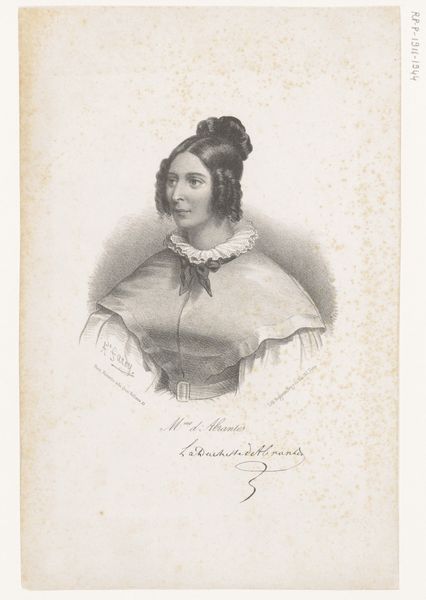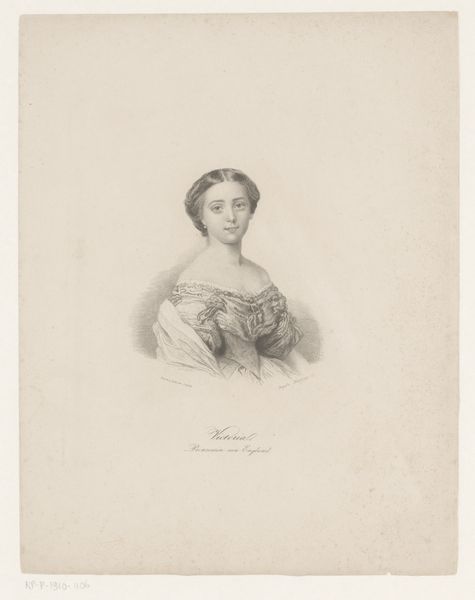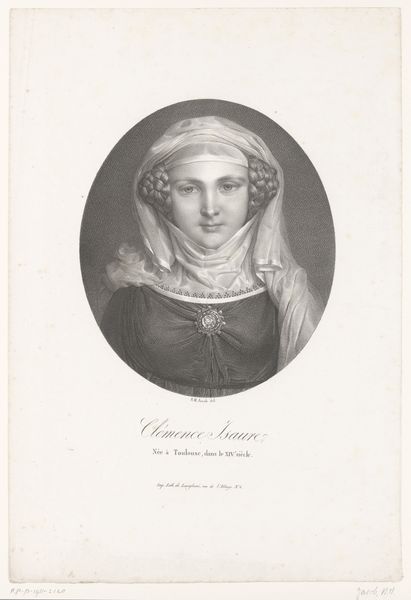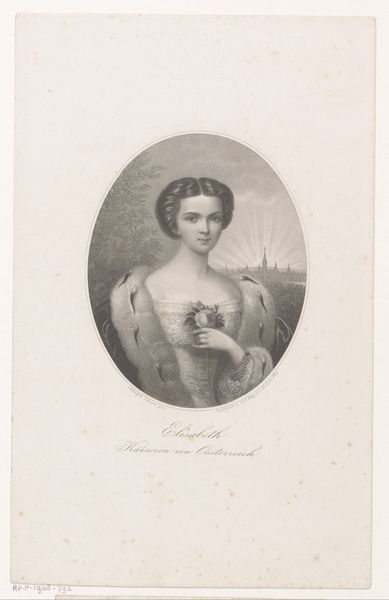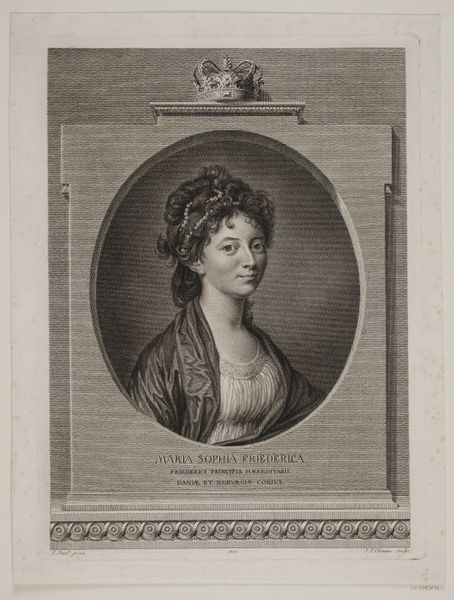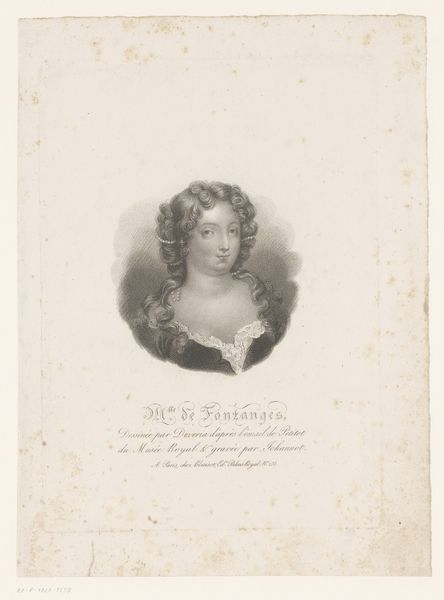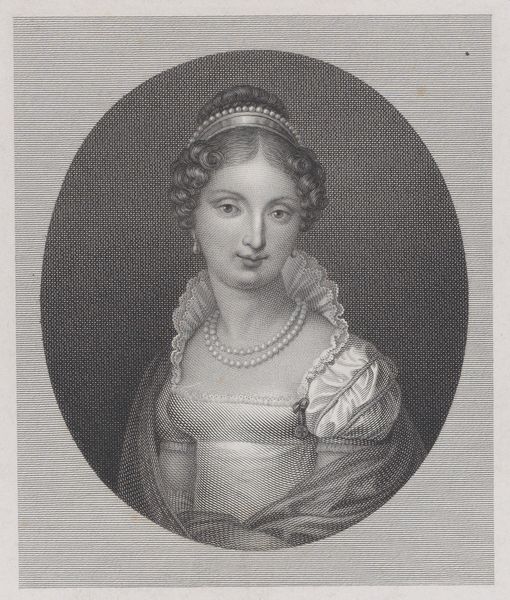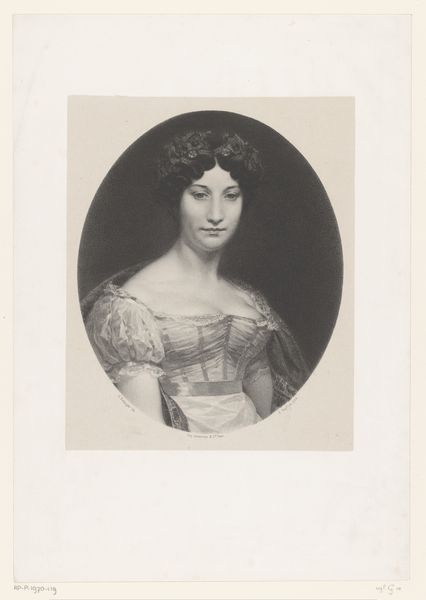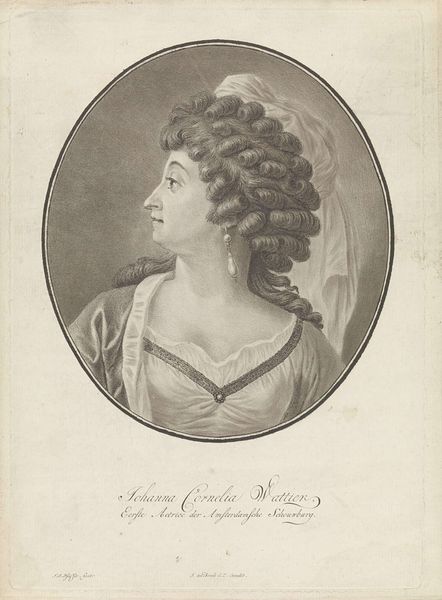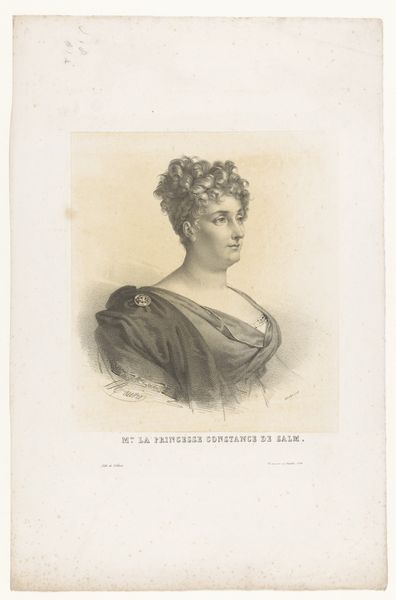
drawing, print, etching
#
portrait
#
pencil drawn
#
drawing
#
neoclacissism
#
light pencil work
# print
#
etching
#
pencil sketch
#
pencil work
Dimensions: height 268 mm, width 185 mm
Copyright: Rijks Museum: Open Domain
Editor: Today we’re looking at Luigi Rados’s "Portret van dichteres Paolina Secco Suardi, pseudoniem Lesbia Cidonia," an etching from sometime between 1783 and 1840. I'm immediately struck by the softness of the lines, it’s quite delicate. How would you interpret this work? Curator: Note the composition; the oval frame, so typical of neoclassical portraiture, immediately formalizes the subject. Examine the use of light and shadow; observe how Rados employs delicate hatching to define the contours of her face and dress, creating a subtle contrast that enhances the volume and texture. This precise technique accentuates the subject's serene expression. How does this controlled execution contribute to the overall effect? Editor: I suppose the precision adds to the sense of refinement and perhaps a kind of detached objectivity, keeping with the neoclassical aesthetic. It's less about capturing fleeting emotion and more about conveying a sense of timeless elegance. Curator: Precisely. The focus is not on revealing deep emotion but rather on constructing an image of idealized beauty. Consider the way her gaze meets ours, direct but reserved, maintaining a studied composure. Also, observe the texture achieved via the etching lines and how they contribute to the visual weight and the implied form. What effect does that have, considering the formal pose? Editor: It does seem to flatten the image slightly, highlighting form over intense realism, which reinforces that neoclassical focus on idealized form. It’s been interesting to focus on these details and to see how they speak to each other. Curator: Indeed. Close observation reveals the formal strategies that determine our experience and understanding.
Comments
No comments
Be the first to comment and join the conversation on the ultimate creative platform.

